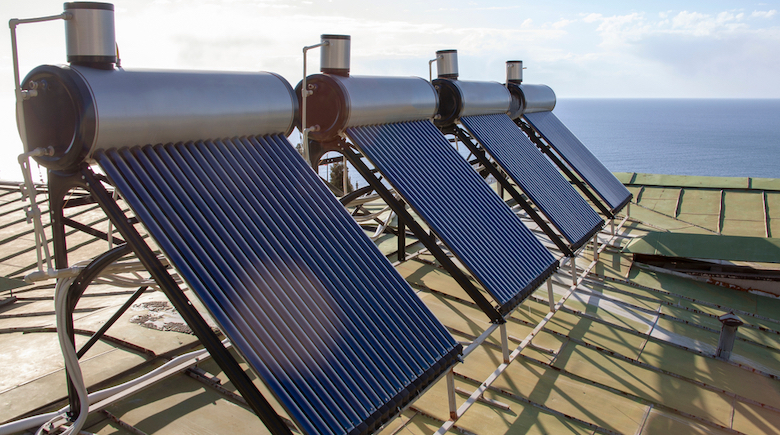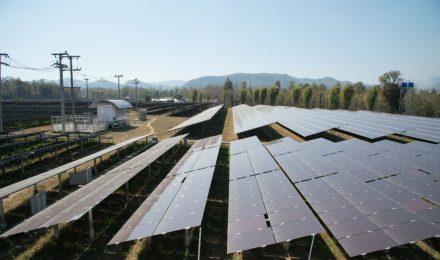Solar thermal energy is becoming more popular as a renewable energy source as it is a clean, affordable, and reliable energy resource. Solar thermal collectors are used to capture and store solar radiation and then convert it into useful heat. Solar thermal collectors are used in a variety of high-temperature applications, such as solar water heaters, industrial process heaters, and solar air conditioners.
Background
Solar thermal energy is a form of renewable energy that uses the sun’s energy to produce heat. Solar thermal collectors are devices that capture and store solar radiation, which is then converted into heat. Solar thermal collectors are used in a variety of high-temperature applications, such as solar water heaters, industrial process heaters, and solar air conditioners.
Solar thermal collectors can be classified into two main types: active and passive. Active solar thermal collectors use mechanical components and auxiliary energy sources to increase their efficiency. Passive solar thermal collectors use only natural convection and radiation to heat up the system. Passive systems are more efficient than active systems, but they require more space and are not as efficient in extreme weather conditions.
Solar thermal collectors are usually made of glass, plastic, or metal, and are designed to absorb the sun’s radiation and convert it into heat. The efficiency of a solar thermal collector is determined by its ability to absorb and retain solar radiation and to transfer the heat to the desired application.
Solar Thermal Collector Innovations
In recent years, there have been a number of advances in solar thermal collector technology. These advances have helped to improve the efficiency of solar thermal collectors, as well as the design of the systems.
Flat Plate Collectors
One of the most common types of solar thermal collectors is the flat plate collector. Flat plate collectors are typically made of metal and glass and are used in residential and commercial applications. The flat plate collector is the most efficient type of solar thermal collector, as it is able to absorb a wide range of wavelengths of solar radiation.
The efficiency of flat plate collectors has been improved through the use of advances such as reflective coatings, selective absorbers, and insulation. These advances have helped to improve the efficiency of flat plate collectors, as well as the design of the systems.
Evacuated Tube Collectors
Evacuated tube collectors are a type of solar thermal collector that is becoming increasingly popular for its high efficiency. These collectors are made of glass tubes that are sealed and evacuated of air, which increases their absorption of solar radiation. Evacuated tube collectors are able to absorb more solar radiation than flat plate collectors, as the vacuum inside the tubes increase the absorption of radiation.
The efficiency of evacuated tube collectors has been improved through the use of advances such as reflective coatings, selective absorbers, and insulation. These advances have helped to improve the efficiency of evacuated tube collectors, as well as the design of the systems.
Evacuated tube collectors are more efficient than flat plate collectors, but they are also more expensive. They also require more space, as the evacuated tubes are usually arranged in parallel rows. However, evacuated tube collectors are able to operate at higher temperatures than flat plate collectors, which can be beneficial in applications that require higher temperatures.
Evacuated tube collectors are typically used in residential and industrial applications. They can be used to heat water for domestic and industrial use, as well as to provide hot air for drying and cooking. Evacuated tube collectors can also be used to generate electricity through the use of concentrated solar power (CSP) systems.
Evacuated tube collectors are also becoming increasingly popular for their ability to provide continuous hot water. These collectors are able to store solar energy in a water tank and provide hot water even when there is no sunlight. This makes them an ideal choice for applications where hot water is required throughout the day.
High-Temperature Applications
Solar thermal collectors can be used in a variety of high-temperature applications. Solar thermal collectors can be used to heat water for domestic and industrial use, as well as for space heating and cooling. Solar thermal collectors can also be used to produce hot air for drying and cooking, as well as to generate electricity through the use of concentrated solar power (CSP) systems.
Solar thermal collectors can also be used in industrial and commercial applications. Solar thermal collectors can be used to heat industrial process fluids such as oil, steam, and water, as well as to provide hot air for drying and cooking. Solar thermal collectors can also be used to generate electricity through CSP systems.
Heat Transfer
Heat transfer is an important factor in solar thermal collector technology. Heat transfer is the process by which energy is transferred from one object to another. Heat can be transferred in three ways: conduction, convection, and radiation.
Conduction is the transfer of heat energy through direct contact between two objects. The heat energy is transferred from the hotter object to the cooler object until both objects reach thermal equilibrium. Heat can be transferred through solid materials, such as metal, as well as through liquid materials.
Convection is the transfer of heat through the movement of a fluid. The heat is transferred from the hotter parts of the fluid to the cooler parts of the fluid. This type of heat transfer is commonly used in the cooling systems of electronic devices, as well as in solar thermal collectors.
Radiation is the transfer of heat energy through electromagnetic waves. This type of heat transfer does not require direct contact between two objects. Radiation is the primary method of heat transfer in solar thermal collectors, as the sun’s radiation is absorbed by the collector and then transferred to the desired application.
The efficiency of a solar thermal collector is determined by its ability to absorb and retain solar radiation and to transfer the heat to the desired application. The most efficient solar thermal collectors are able to absorb the maximum amount of solar radiation and then transfer the heat to the desired application with minimal losses. The collector must also be able to retain the heat energy so that it can be used for the desired application.
In order to maximize the efficiency of a solar thermal collector, it is important to consider the materials used in the collector. The materials used in the collector should be able to absorb as much of the sun’s radiation as possible, as well as to retain the heat energy and transfer it to the desired application. The materials should also be able to withstand the high temperatures of the sun’s radiation, as well as the extreme temperatures of the application.
It is also important to consider the design of the collector. The design of the collector should be able to maximize the amount of solar radiation absorbed and retained, as well as the efficiency of the heat transfer. The design should also be able to withstand the high temperatures of the sun’s radiation, as well as the extreme temperatures of the application.
Heat transfer is an important factor in solar thermal collector technology. The efficiency of a solar thermal collector is determined by its ability to absorb and retain solar radiation and to transfer the heat to the desired application. In order to maximize the efficiency of a solar thermal collector, it is important to consider the materials used in the collector, as well as the design of the collector. With further advances in solar thermal collector technology, it is likely that the potential for further development and application in high-temperature applications will be realized.
Conclusion
Solar thermal collectors are becoming increasingly popular as a renewable energy source. Solar thermal collectors are used in a variety of high-temperature applications, such as solar water heaters, industrial process heaters, and solar air conditioners. Advances in solar thermal collector technology have helped to improve the efficiency of solar thermal collectors, as well as the design of the systems. Heat transfer is an important factor in solar thermal collector technology, and the efficiency of a solar thermal collector is determined by its ability to absorb and retain solar radiation and to transfer the heat to the desired application. With further advances in solar thermal collector technology, it is likely that the potential for further development and application in high-temperature applications will be realized.



